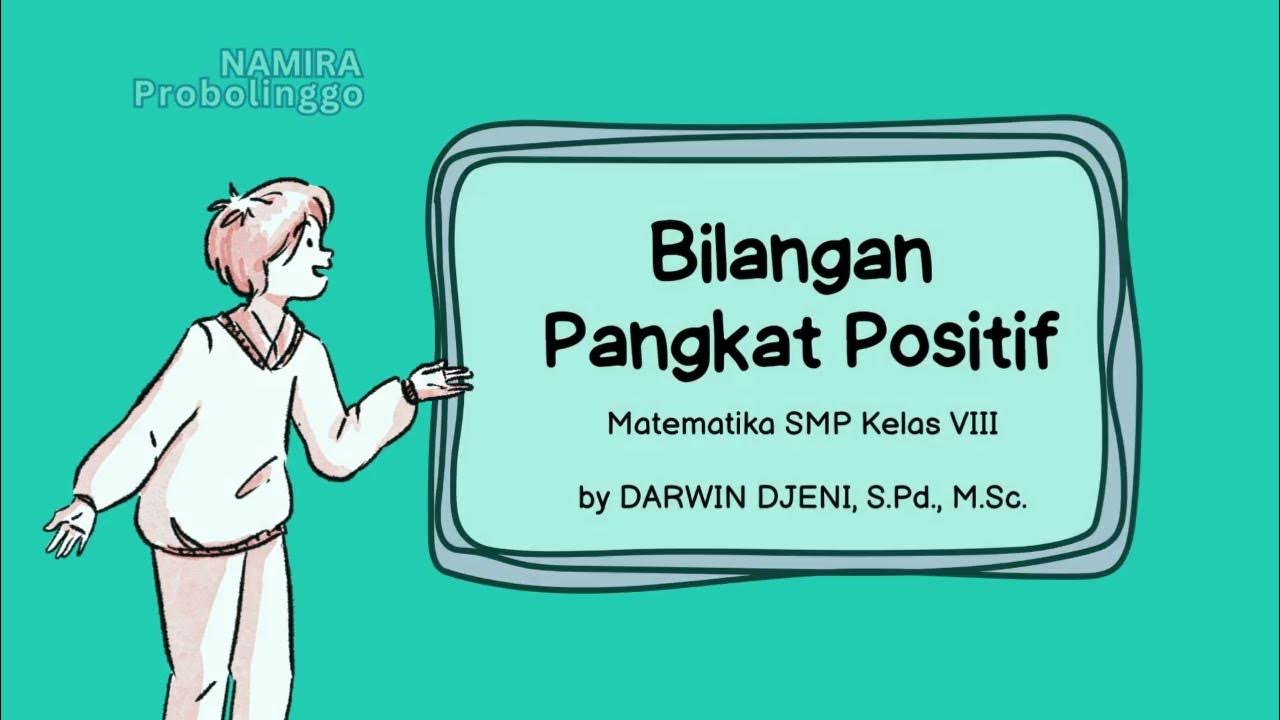#2 Berpikir Komputasional Kelas 8 - Himpunan dan Sistem Bilangan (Biner, Oktal, Desimal) - Kumer
Summary
TLDRThis video lesson covers the concepts of sets and number systems, particularly for 8th-grade Informatics students. It begins with a review of computational thinking elements, focusing on functions, algorithms, and data structures. The lesson then delves into sets, explaining their definition and providing examples. The core of the lesson is about number systems, including binary, octal, and decimal systems, with explanations on how to convert between them. The video concludes with practical examples and calculations, aiming to deepen students' understanding of these fundamental concepts.
Takeaways
- 📚 The lesson begins with a greeting and a quick recap of the previous class, which covered algorithms and data structures in computational thinking.
- 🔢 Today's lesson focuses on sets and number systems, particularly binary, octal, and decimal systems.
- 🧮 The binary system uses only two symbols, 0 and 1, and is fundamental in computing, where 1 byte equals 8 bits.
- 🎯 The octal system is a base-8 number system using digits from 0 to 7, and its conversion process involves dividing by 8.
- 🔟 The decimal system is the most common in daily life, using a base of 10 with digits from 0 to 9.
- 🔄 The script explains how to convert decimal numbers to binary and octal through division and tracking remainders.
- ➡️ The lesson also covers converting binary and octal numbers back to decimal by multiplying each digit by the base raised to the power of its position.
- 🌱 The lesson includes an example using plants treated with different colored solutions to determine their effects, illustrating set analysis.
- 🧪 The example concludes that each color in the treatment has a specific effect, demonstrating how sets can be analyzed to find common properties.
- 🎓 The lesson ends with a summary and encouragement to review previous lessons on computational thinking.
Q & A
What is the main focus of the lesson described in the video transcript?
-The main focus of the lesson is on sets and number systems, specifically covering sets and three number systems: binary, octal, and decimal. The lesson also touches briefly on hexadecimal, which will be covered more deeply in another lesson.
What are the three number systems discussed in the lesson?
-The three number systems discussed are binary (base-2), octal (base-8), and decimal (base-10).
How is the concept of a 'set' defined in the lesson?
-A set is defined as a collection of objects that share a common characteristic and can be clearly defined. An example provided is the set of months that start with the letter 'J', which includes January, June, and July.
What is the significance of the treatment examples given with different colored solutions in the lesson?
-The treatment examples with different colored solutions are used to explain how to analyze the effects of each solution on the plant's growth and characteristics. The analysis helps identify the function of each colored solution based on the observed outcomes.
How is the binary number system described in the lesson?
-The binary number system is described as a system of writing numbers using only two symbols: 0 and 1. It's also referred to as a bit (binary digit). In computing, binary numbers are grouped in sets of 8 bits to form a byte.
What is the method described for converting a decimal number to binary?
-To convert a decimal number to binary, the method involves repeatedly dividing the decimal number by 2, recording the remainder as 1 if there is a remainder or 0 if there isn't, and then reading the binary number from the last remainder upwards.
Can you explain how to convert a decimal number to octal according to the lesson?
-To convert a decimal number to octal, you divide the decimal number by 8 repeatedly until the quotient is zero, noting the remainders. The octal number is then formed by reading the remainders from the last to the first.
What is the process for converting a binary number to a decimal number?
-To convert a binary number to a decimal number, multiply each binary digit by 2 raised to the power of its position, starting from 0 on the right. Then, sum all the resulting values to get the decimal equivalent.
How is an octal number converted to a decimal number in the lesson?
-An octal number is converted to a decimal number by multiplying each digit of the octal number by 8 raised to the power of its position (starting from 0 on the right) and then summing all the results.
What is the importance of understanding number systems in the context of computer science?
-Understanding number systems is crucial in computer science because different systems, such as binary and octal, are fundamental to how data is represented and processed in computers. These systems are used in various aspects of computing, including programming and data storage.
Outlines

Этот раздел доступен только подписчикам платных тарифов. Пожалуйста, перейдите на платный тариф для доступа.
Перейти на платный тарифMindmap

Этот раздел доступен только подписчикам платных тарифов. Пожалуйста, перейдите на платный тариф для доступа.
Перейти на платный тарифKeywords

Этот раздел доступен только подписчикам платных тарифов. Пожалуйста, перейдите на платный тариф для доступа.
Перейти на платный тарифHighlights

Этот раздел доступен только подписчикам платных тарифов. Пожалуйста, перейдите на платный тариф для доступа.
Перейти на платный тарифTranscripts

Этот раздел доступен только подписчикам платных тарифов. Пожалуйста, перейдите на платный тариф для доступа.
Перейти на платный тарифПосмотреть больше похожих видео

Kurikulum Merdeka Informatika Kelas 8 Bab 2 Berpikir Komputasional

#1 Sistem Komputer Kelas 8-Informatika Kumer (Komponen SK, Pengalamatan Memory dengan Heksadesimal)

Kurikulum Merdeka Informatika Kelas 8 Bab 4: Sistem Komputer

[Materi] Bilangan Berpangkat Bulat Positif

Informatika dan Keterampilan Generik

Kurikulum Merdeka Informatika Kelas 8 Bab 5 Jaringan Komputer dan Internet
5.0 / 5 (0 votes)
